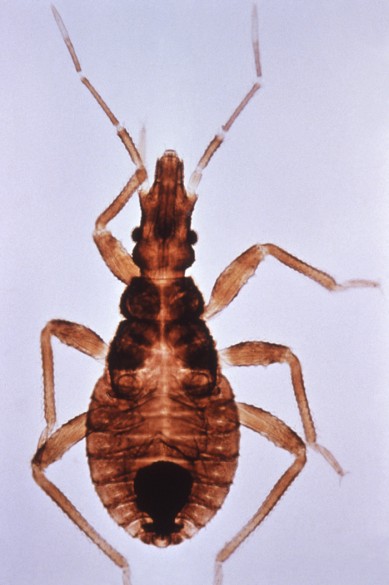
Chagas disease, a deadly tropical infection caused by the protozoan parasite Trypanosoma cruzi and transmitted by biting insects called “kissing bugs,” has begun to spread around the world, including the U.S. Yet current treatment is toxic and limited to the acute stage.
In The Journal of Infectious Diseases (JID), Galina Lepesheva, Ph.D., and her colleagues at Vanderbilt University and Meharry Medical College report curing both the acute and chronic forms of the infection in mice with a small molecule, VNI.
VNI specifically inhibits a T. cruzi enzyme essential for cell multiplication and integrity. In mouse models of Chagas disease, VNI achieved cures with 100 percent survival and without toxic side effects.
The discovery “represents a possible new way to combat a serious worldwide threat, for which there are currently few good therapeutic options,” said Richard Okita, Ph.D., of the National Institute of General Medical Sciences, part of the National Institutes of Health (NIH), which helped support the research.
About 8 million people have been infected by T. cruzi, mostly in Latin America, but kissing bugs have been found across the southern United States, according to a recent report.
Because the parasite is in the insect’s feces, it can also be transmitted through contaminated food and drink, through blood and from mother to child.
The most common symptom of the acute phase of the infection is fever, but the parasite also can trigger inflammation of the heart and brain, which can be fatal. In the chronic phase, Chagas disease most severely affects the heart and gastrointestinal tract.
Fernando Villalta, Ph.D., chair of Microbiology and Immunology at Meharry, is first author on the paper published in JID. Lepesheva, research associate professor of Biochemistry at Vanderbilt and a member of the Vanderbilt Institute for Global Health, is corresponding author.
Other senior authors from Vanderbilt are Jeffrey Johnston, Ph.D., Stevenson Professor of Chemistry, and Michael Waterman, Ph.D., professor of Biochemistry, emeritus, and former chair of the department.
The research was supported by NIH grant GM067871, by a pilot project grant from the Vanderbilt Institute of Chemical Biology, and in part by NIH grants GM084333 and AI080580.